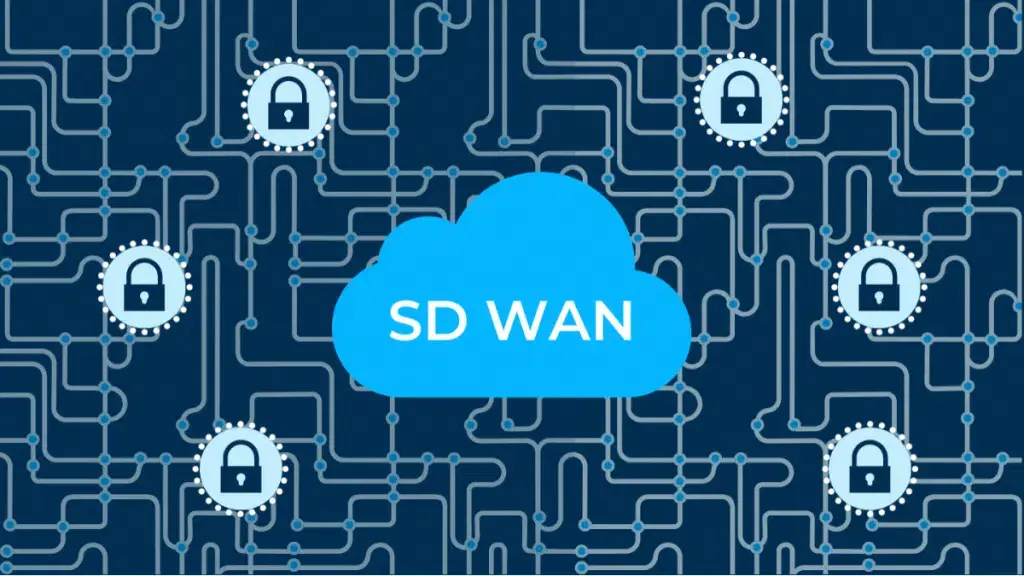The Changing Landscape of Business Networking
Over the last decade, business networking has rapidly shifted from static, hardware-based setups to dynamic, software-defined models. Organizations that once depended almost entirely on multiprotocol label switching (MPLS) and leased lines found these approaches too rigid for an era of cloud applications and mobile workforces. Demand for dependable, agile connections has skyrocketed as companies move toward digital transformation. Managed network services like SD-Wan as a service are stepping in to help organizations build and adapt interconnected environments that enable real-time collaboration and service delivery across multiple branches, home offices, and even international sites. This trend is well-documented in recent market research. The worldwide WAN edge infrastructure market grew by 20% during 2021 alone, propelled by businesses looking for more scalable, flexible alternatives to legacy technology. The momentum is distinctly global as enterprises of all sizes and locations strive for faster rollouts, more reliable connectivity, and centralized control. This shift speaks to technical needs and changing business realities, where adaptability, cost control, and operational resilience are crucial for growth.
What Defines Managed SD-WAN?
Managed SD-WAN stands apart from traditional networking not just by what it does but also by how it is delivered. Rather than requiring a business to manage, monitor, and troubleshoot its own software-defined wide area networks, a managed solution hands off these responsibilities to specialized providers. This removes a significant burden from in-house IT teams, who no longer need to spend critical hours on complex setups or intricate troubleshooting. Typically, a managed SD-WAN provider offers centralized dashboards, proactive monitoring, and rapid response to performance issues—often with service level agreements that guarantee uptime. This managed approach is beautiful for mid-sized organizations or those expanding rapidly, since it allows them to easily add new sites or users without significant IT headcount or training investments. The model offers built-in redundancy, seamless failover, and real-time adjustments to ensure that core business applications always have the capacity and resilience they need, even as priorities shift throughout the day.
Solving Network Complexity in a Cloud-First Era
Cloud adoption, hybrid work, and digital business models have thrown traditional network architectures into disarray. Between the proliferation of SaaS platforms, remote devices, and multi-cloud deployments, IT teams face unprecedented complexity. Managed SD-WAN solutions meet these challenges by providing centralized management, application-aware routing, and granular visibility into network health. Every data packet—whether headed to a branch, cloud platform, or remote worker—can be intelligently prioritized to support productivity, reduce lag, and increase security. For instance, a chain of retail stores can use managed SD-WAN to link hundreds of locations, automatically optimizing network paths so that sales data, inventory updates, and customer transactions take the fastest route while less critical traffic is deprioritized. Configuration changes or policy updates can be rolled out network-wide with a single click, slashing the time and risk associated with large-scale updates. As the network continually adapts to demand, organizations experience more consistent application performance, providing measurable improvements in everything from customer service to inventory accuracy.
Benefits at a Glance
- Improved network performance: Intelligent routing and load balancing mean lower latency, less jitter, and fewer dropped connections, even during periods of heavy use.
- Better reliability and uptime: Built-in failover between multiple links reduces dependency on any single circuit, ensuring business operations are less vulnerable to outages.
- Simplified management for IT departments: Centralized dashboards and automation replace labor-intensive, manual network configurations, giving IT teams more time to focus on strategic innovation.
- Enhanced security features: Integrated threat detection, network segmentation, and end-to-end encryption help safeguard sensitive business data as it moves between users, branches, and clouds.
- Potential for cost reductions: SD-WAN minimizes the need for costly private lines and enables organizations to use more affordable broadband or wireless links without sacrificing security or performance.
Security Features That Matter
Today’s threat landscape constantly evolves, and organizations must keep up to safeguard their assets and data. Managed SD-WAN solutions deliver enterprise-grade security as a core feature rather than an afterthought. Key protections include end-to-end encryption of all data, dynamic segmentation of network resources, and easy integration with advanced firewalls and intrusion detection systems. For businesses operating in highly regulated sectors, these security features make it easier to maintain compliance and protect against external threats and insider risks. The emphasis on cybersecurity is more than just a trend; it’s backed by industry analysis. Security now tops the enterprise SD-WAN priorities worldwide. Providers offer robust monitoring, real-time alerts, and rapid threat mitigation to stay ahead of new risks in a connected world. As organizations rely on cloud applications for everyday tasks, maintaining strong, adaptive security becomes indispensable for safeguarding sensitive data and business continuity.
Real-World Use Cases
Managed SD-WAN isn’t just for global enterprises—it delivers measurable value to companies of all sizes and industries. Take, for example, a multinational logistics provider that struggled with frequent connectivity issues across hundreds of depots and warehouses. By adopting managed SD-WAN, they improved their application uptime by nearly 30% within six months while reducing IT support tickets and costs related to legacy hardware. Another compelling example is a creative agency operating in multiple countries whose teams rely on high-bandwidth, graphics-heavy cloud applications. After switching to SD-WAN for their networking backbone, they achieved seamless access to cloud platforms, faster large-file transfers, and enhanced network visibility. The result was improved productivity and significant cost optimization, as underutilized links were repurposed or retired based on real-time analytics.
What to Consider Before Choosing a Managed SD-WAN
- Integration with current infrastructure: It’s essential to choose a service that works smoothly with your existing network topology, security appliances, and public cloud providers.
- Support for global operations: If your business spans multiple regions, ensure your SD-WAN provider offers global coverage, relevant certifications, and experience with local regulations.
- Service provider expertise and support levels: Don’t overlook the importance of responsive customer support, a straightforward escalation process, and case studies of previous successful deployments.
- Long-term scalability for business growth: Look for solutions that allow you to add users, branches, or capacity quickly without disruptive overhauls or hidden costs.
Comparing providers carefully, asking about migration timelines, and requesting trial deployments can help ensure a smooth transition to managed SD-WAN. It’s worth prioritizing vendors that provide clear documentation, transparent pricing, and an emphasis on security.
Final Thoughts: The Road Ahead for Network Management
New business challenges require new solutions. Managed SD-WAN, with its blend of agility, automation, and robust security, is fast becoming a cornerstone for organizations that build future-ready infrastructure. As demand for flexible IT grows—and unexpected disruptions or rapid expansion test traditional networks—SD-WAN empowers teams to innovate without worrying about connectivity. The companies embracing managed SD-WAN today aren’t just solving current connectivity issues; they’re building a foundation for growth, digital transformation, and global reach. As technologies like IoT, edge computing, and 5G evolve, SD-WAN will continue to stand out as a key enabler of resilient, connected business models that can thrive in any environment
Also Read-.Cryotherapy Chamber Price | Electric Cryo Chamber for Business










